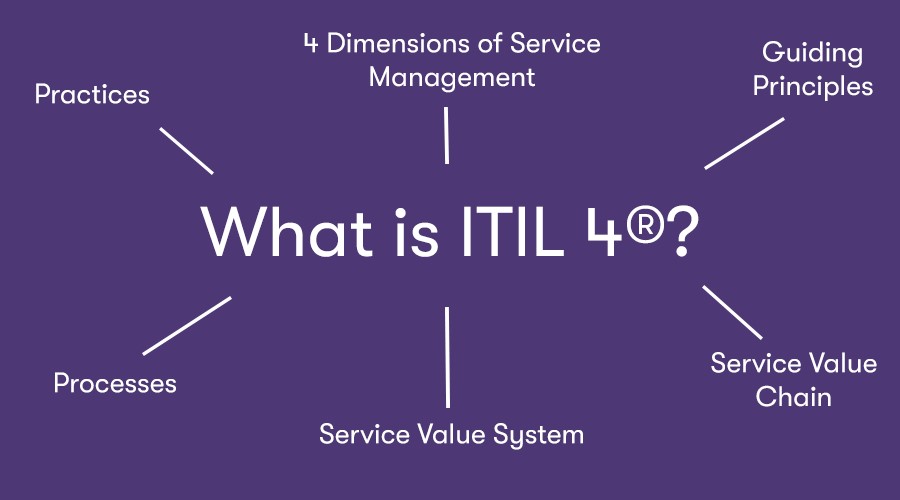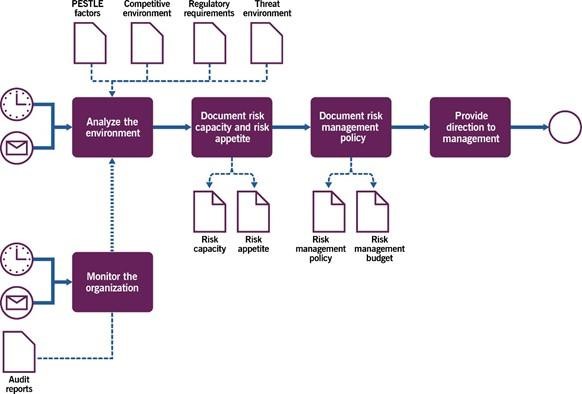Table of Contents
ToggleITIL 4, the latest version of the IT Infrastructure Library, is a detailed framework for IT service management (ITSM) that has significantly influenced IT governance and risk management strategies across various industries. This article explores how ITIL 4 impacts IT governance frameworks, enhances risk management strategies, and underscores the importance of ITIL 4 training for individuals and organizations.
Understanding ITIL 4 and Its Core Principles
What is ITIL 4?
ITIL 4 is the most recent update to the globally recognized ITIL framework, designed to help organizations manage their IT services more effectively. It introduces a holistic approach to IT service management, emphasizing flexibility, collaboration, and integration with other business processes.

Core Principles of ITIL 4
ITIL 4 is based on seven guiding principles:
- Focus on Value: Everything the organization does should link back to delivering value to stakeholders.
- Start Where You Are: Assess the current situation objectively to identify what can be reused to create the desired future state.
- Progress Iteratively with Feedback: Avoid doing everything at once. Organize work into manageable sections.
- Collaborate and Promote Visibility: Work together and ensure transparency across the organization.
- Think and Work Holistically: Understand that service management is not just about IT but about the whole organization.
- Keep It Simple and Practical: Always use the minimum number of steps to achieve the goal.
- Optimize and Automate: Streamline processes and make the best use of technology.
The Role of ITIL 4 in IT Governance
Enhancing IT Governance Frameworks
IT governance ensures that IT investments support business goals and provide value. ITIL 4 influences IT governance by:
- Aligning IT with Business Strategy: ITIL 4 helps organizations align their IT services with their business objectives. By focusing on value and continuous improvement, ITIL 4 ensures that IT initiatives support overall business goals.
- Improving Decision-Making: ITIL 4 provides a structured approach to IT management, which helps in making informed decisions. The framework encourages collaboration and visibility, leading to better governance and accountability.
- Ensuring Compliance and Control: ITIL 4’s principles and practices help organizations maintain compliance with regulatory requirements and industry standards. It promotes a culture of continuous monitoring and improvement, essential for robust governance.
Table: Key Elements of IT Governance Enhanced by ITIL 4
| Element | Description | ITIL 4 Contribution |
|---|---|---|
| Alignment with Business | Ensures IT supports business goals | Focus on Value, Holistic Approach |
| Decision-Making | Structured approach to manage IT services | Collaborative and Transparent Processes |
| Compliance and Control | Adherence to regulatory and industry standards | Continuous Monitoring and Improvement |
| Resource Management | Optimal use of IT resources | Optimize and Automate |
| Performance Measurement | Evaluating IT performance against business objectives | Iterative Progress and Feedback |

Strengthening Risk Management with ITIL 4
Identifying and Mitigating Risks
Risk management involves identifying, assessing, and controlling risks that can affect an organization’s operations. ITIL 4 enhances risk management strategies through:
- Proactive Risk Identification: ITIL 4 promotes a proactive approach to risk identification. By encouraging continuous feedback and iterative progress, potential risks are identified early, reducing their impact.
- Enhanced Risk Assessment: ITIL 4’s holistic view of service management allows for a comprehensive risk assessment, considering all aspects of IT services and their impact on the business.
- Effective Risk Mitigation: ITIL 4’s principles of optimization and automation help in implementing effective risk mitigation strategies, ensuring that risks are managed efficiently and effectively.
Statistics: ITIL 4 and Risk Management
A study by AXELOS revealed that organizations implementing ITIL 4 reported a 30% reduction in incidents and a 20% improvement in risk management practices within the first year of adoption.

Table: ITIL 4’s Impact on Risk Management
| Risk Management Aspect | Traditional Approach | ITIL 4 Approach |
|---|---|---|
| Risk Identification | Reactive, often post-incident | Proactive, continuous feedback |
| Risk Assessment | Siloed, focusing on individual components | Holistic, considering entire service landscape |
| Risk Mitigation | Manual, resource-intensive | Optimized and automated processes |
| Incident Reduction | Gradual improvement | Significant reduction (30% as per AXELOS study) |
| Risk Management Efficiency | Moderate | Improved (20% as per AXELOS study) |
The Criticality of ITIL 4 Training for Individuals and Organizations
Why is ITIL 4 Training Essential?
Training in ITIL 4 is crucial for both individuals and organizations for several reasons:
- Enhanced Skillset: ITIL 4 training equips professionals with the skills needed to manage IT services effectively, aligning them with business goals.
- Career Advancement: Certified ITIL 4 professionals are in high demand globally, as organizations seek individuals who can drive ITSM improvements and support business objectives.
- Improved Organizational Performance: Organizations benefit from having trained ITIL 4 professionals, as they bring best practices to the table, enhancing overall performance and service delivery.
Benefits of ITIL 4 Training
- Increased Efficiency: ITIL 4 Foundation training helps individuals understand how to optimize processes and automate tasks, leading to increased operational efficiency.
- Better Customer Satisfaction: By focusing on delivering value, ITIL 4-trained professionals can enhance customer satisfaction and loyalty.
- Reduced Costs: ITIL 4 emphasizes the efficient use of resources, helping organizations reduce costs without compromising on service quality.
- Enhanced Collaboration: The framework promotes a culture of collaboration and visibility, leading to better teamwork and communication within the organization.
Table: Benefits of ITIL 4 Training for Individuals and Organizations
| Benefit | Description | Impact on Individuals | Impact on Organizations |
|---|---|---|---|
| Increased Efficiency | Optimized processes and automated tasks | Enhanced skillset, improved performance | Reduced operational costs |
| Better Customer Satisfaction | Focus on value delivery and continuous improvement | Improved customer handling skills | Higher customer loyalty and satisfaction |
| Reduced Costs | Efficient use of resources | Knowledge of cost-saving practices | Lower operational expenses |
| Enhanced Collaboration | Culture of collaboration and transparency | Better teamwork and communication skills | Improved organizational culture |
Conclusion: The Strategic Importance of ITIL 4 in Modern IT Management
ITIL 4 has revolutionized IT service management by providing a comprehensive framework that aligns IT services with business objectives, enhances governance, and strengthens risk management strategies. Its principles of value delivery, holistic thinking, and continuous improvement are crucial for modern organizations aiming to thrive in a competitive environment.
Investing in ITIL 4 training is not just beneficial but essential for individuals seeking career growth and organizations striving for operational excellence. Spoclearn is an AXELOS/PeopleCert Accredited Training organization (ATO) to deliver ITIL 4 training programs worldwide. By embracing ITIL 4, businesses can ensure that their IT services are not only efficient and effective but also aligned with their business strategic goals, ultimately leading to sustained success and growth.
Other ITIL Blogs – Navigating ITIL 4’s Service Value Chain for Optimal Performance
